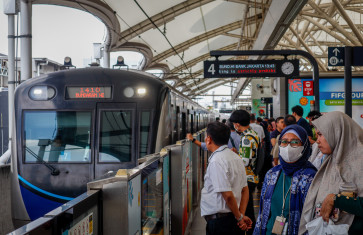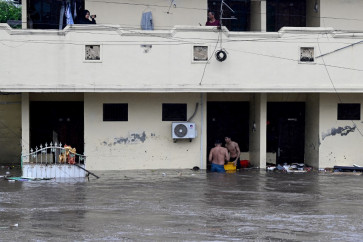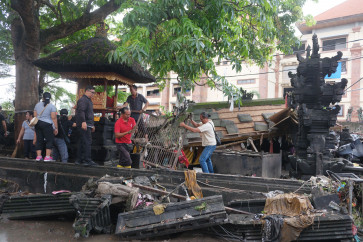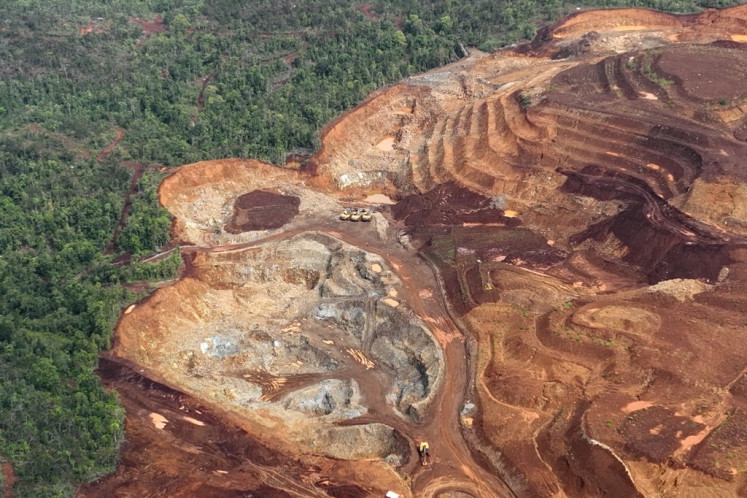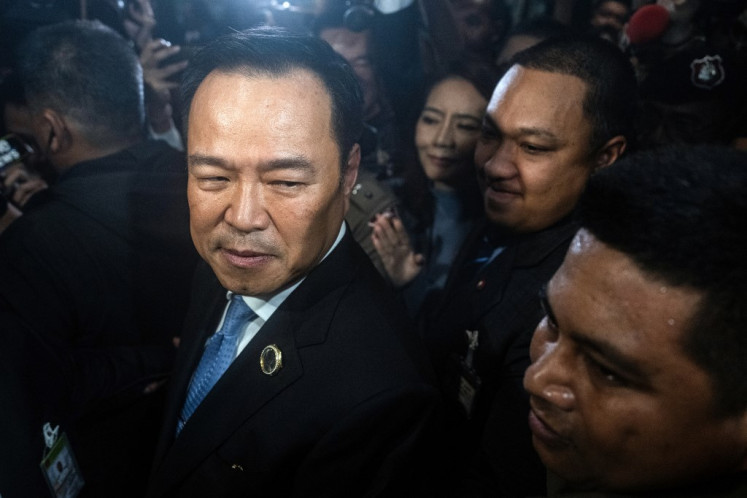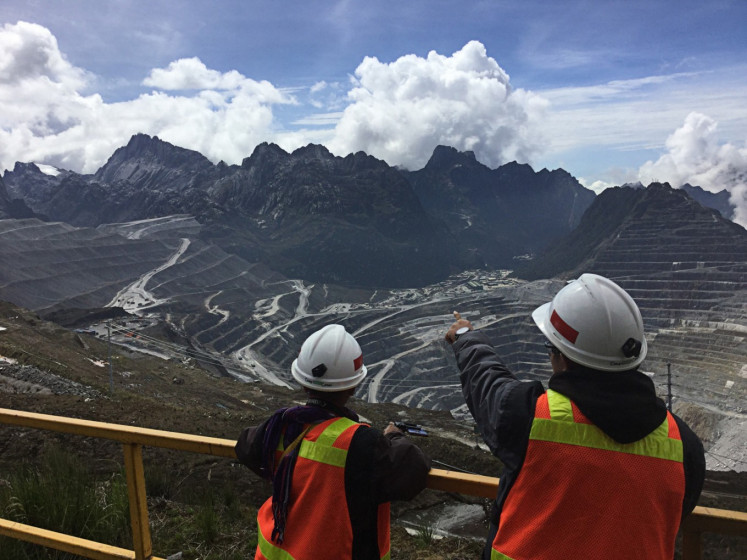Popular Reads
Top Results
Can't find what you're looking for?
View all search resultsPopular Reads
Top Results
Can't find what you're looking for?
View all search resultsExtreme rainfall to become 'new normal'
Skyward: Air Force personnel load equipment onto a CN-295 plane that will be deployed for a weather-modification operation at Halim Perdanakusuma air base in East Jakarta on Friday
Change text size
Gift Premium Articles
to Anyone
S
kyward: Air Force personnel load equipment onto a CN-295 plane that will be deployed for a weather-modification operation at Halim Perdanakusuma air base in East Jakarta on Friday. The operation aims to reduce rain intensity across Greater Jakarta and prevent further flooding. (Antara/Aprillio Akbar)
While officials and politicians in Jakarta indulge in a blame game over responsibility for the severe flooding in Greater Jakarta, it seems that few people are willing to acknowledge that the climate crisis has hammered the country once again by inundating the capital in more water than it can cope with.
Aside from revealing the real culprit behind the floods, scientists also broke the bad news that such extreme weather might become “a new normal” in the future, urging everyone to be more prepared ahead of future disasters.
Severe flooding has soaked large parts of Jakarta and its neighboring cities since New Year’s Eve, killing over 40 people and forcing more than 170,000 others to leave their submerged homes. Many declared the floods to be the worst in the capital since 2013.
According to the Meteorology, Climatology and Geophysics Agency (BMKG), the severe flooding was mainly caused by some of the heaviest rainfall in the city’s history, with other causes such as a lack of water-catchment areas and ground subsidence.
The agency recorded rainfall intensity of 377 millimeters per day at Halim Perdanakusuma Air Force Base in East Jakarta on New Year’s Eve. The previous heaviest rainfall in the city was in 2007, when rainfall intensity reached 340 mm per day.
This has been caused by a combination of several weather phenomena happening over Java Island, such as the encounter of two winds coming from the north and south of the island resulting in huge cloud formations over Java.
Aside from the weather phenomenon, the agency revealed the recent extreme weather was part of a trend of increasing rainfall in Greater Jakarta. The BMKG has recorded that rainfall in the area has risen by 10 to 20 mm in 10 years.
“The statistical calculation on the chance of extreme weather that triggers flooding in the city has been increasing about 2 to 3 percent now compared to climate conditions 100 years ago,” BMKG deputy for climatology Herizal said in a statement.
“Heavy rains will fall more often in the current climate conditions,” he went on to say.
The agency was echoed by Armi Susandi, a meteorology and geophysics expert from the Bandung Institute of Technology (ITB), who said that climate change was behind the phenomena occurring in Indonesia recently.
Atmospheric phenomena, he said, usually did not occur at the same time. However, the changing climate has triggered things like El Niño occurring more often, delaying the arrival of monsoon winds.
“The weather patterns will change, and it will become a new routine. The new normal will be the increased intensity of such weather conditions,” Armi told The Jakarta Post on Thursday.
He added that Indonesians should be prepared for more flooding as the country’s rainy seasons would be shorter but more intense compared with previous periods.
Current efforts to solve the climate crisis would be useless, Armi added, as greenhouse gas emissions would stay in the atmosphere for hundreds of years thus triggering worse climate crises over the years.
Indonesia pledged in 2016 to cut its greenhouse gas emissions by 29 percent, or 41 percent with international assistance, by 2030. The commitment, however, has been deemed insufficient by international observers.
Various parties have warned the government regarding the increasing risk of disasters amid the changing climate. The National Disaster Mitigation Agency (BNPB) and BMKG, for example, have repeatedly warned both the government and the people regarding the rising potential for hydrometeorological disasters.
“The only thing that we can do is adapt to future conditions,” Armi said.
However, the country is considered to be far from ready to face the changing climate as it lacks the necessary infrastructure and technology to handle the resultant impacts.
Armi urged the government to ensure every development made in every part of the country is in line with disaster risk-management principles, in which short-term disaster mitigation should be a priority.
“The government should also give incentives to the people regarding disaster mitigation, as well as promoting climate-change adaptation. For example, building necessary facilities that will ease the impact from climate-induced disasters,” Armi said.


